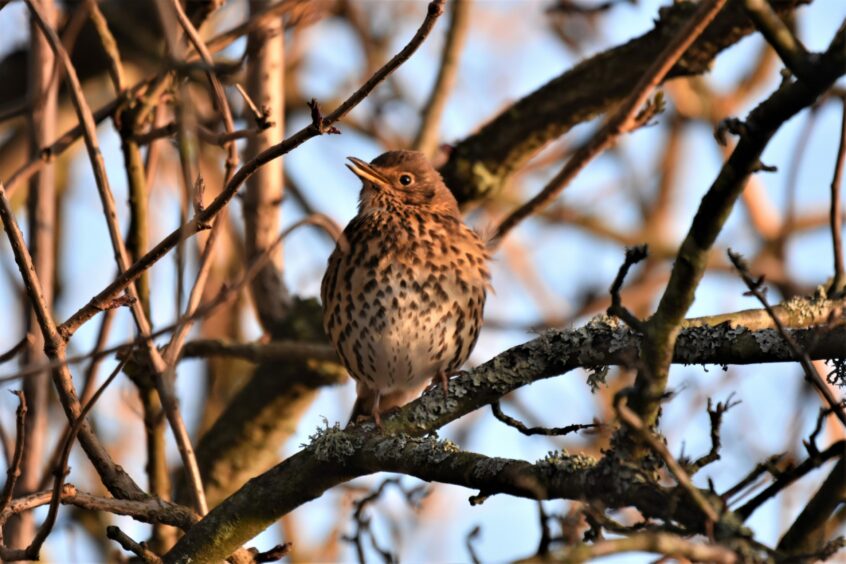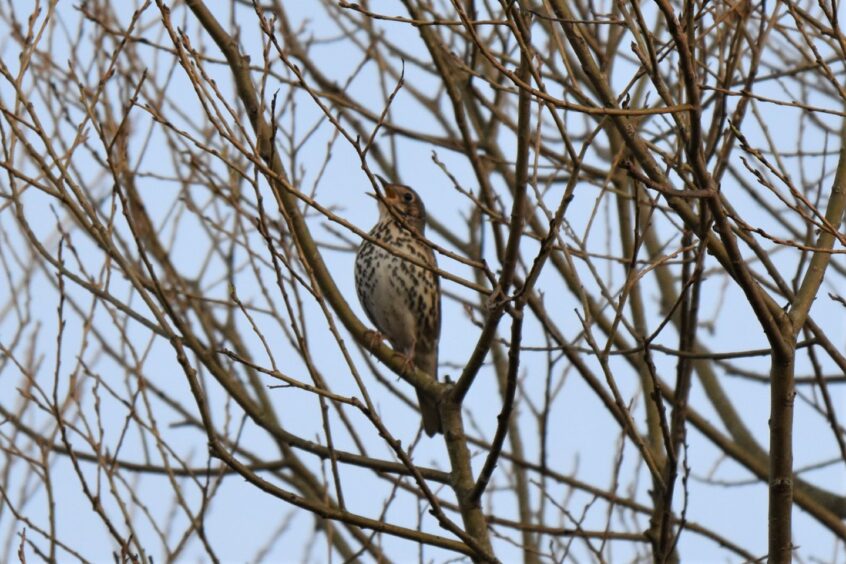A sweet note, and then one more: a musical couplet, followed immediately by another, hesitant at first but gaining in confidence as the music from a song thrush floated across the crisp dusk air.
This was a double-take moment – was I really hearing this, for it was early winter, and I don’t ever recall encountering a song thrush in full musical flow at this time of year before?
But the lilting music began once more – this was most definitely a song thrush.
Indeed, a few dawns previously, and several miles away from where I was now standing, I thought I had heard a song thrush in pine woodland in the far distance.
However, I had dismissed it as a vagary of my imagination caused by my early-morning mind having not fully awoken.
Song thrushes certainly have the longest singing period of most birds in Scotland, often tuning-up in early January and still singing, albeit more hesitantly and erratically, by the end of August. Only the robin can exceed such singing longevity.
Research
On doing some research, it appears it is not unusual for song thrushes to sing in late autumn and early winter down in England as they proclaim their territories.
I imagine, the song is heard much less often in Scotland at this time of year, principally because many of our song thrushes depart from their summer haunts and undertake partial migrations from inland areas to the coast, as well as further south and west to England and Ireland to escape the worst of the cold weather.
Other interesting bird behaviour has come to light on my home patch.
Every late afternoon, a pair of starlings swoop into a gap under the eaves of our house to spend the night in the attic.
On cold frosty nights, or when an easterly wind is blowing-in snow flurries, it is hard to imagine a cosier place for this pair of love birds as they snuggle-up together.
Their behaviour differs from many other starlings in winter, who prefer to roost in large flocks in woodlands or under bridges and in derelict buildings.
Each type of behaviour has its merits – there is safety numbers and being in a large roosting flock and huddling close together generates warmth.
Feeding areas
During the day, by working together and sharing information, large groups can seek out the best feeding areas.
However, I reckon my solitary pair of starlings have adopted the best survival strategy.
Not only is a house attic warmer than a more open roosting site, but it also offers better protection from predators.
I imagine that my starlings are the same couple that bred under this roof space the previous spring, and as such, they don’t need to waste time and energy trying to find a new mate when the breeding season arrives once more.
The early singing song thrushes and the differing roosting behaviours of starlings highlight that animal behaviour not always set in a tablet of stone.
Like us, each individual is unique and exhibit different personalities, which is why nature is such a beautiful and multi-varied thing.











